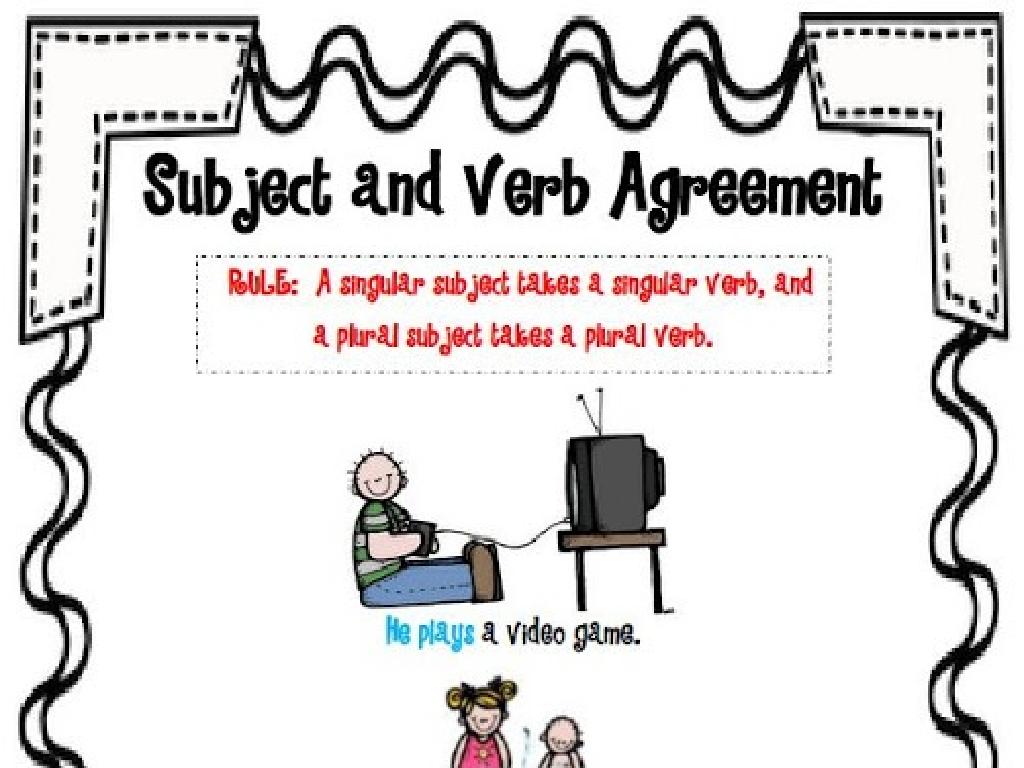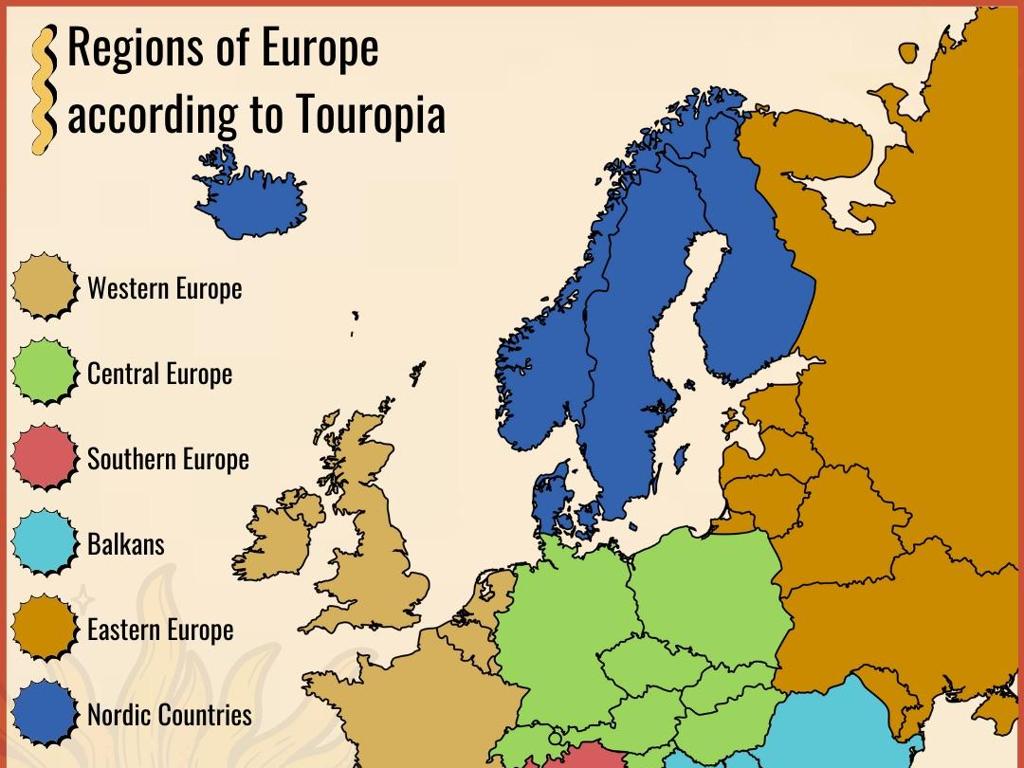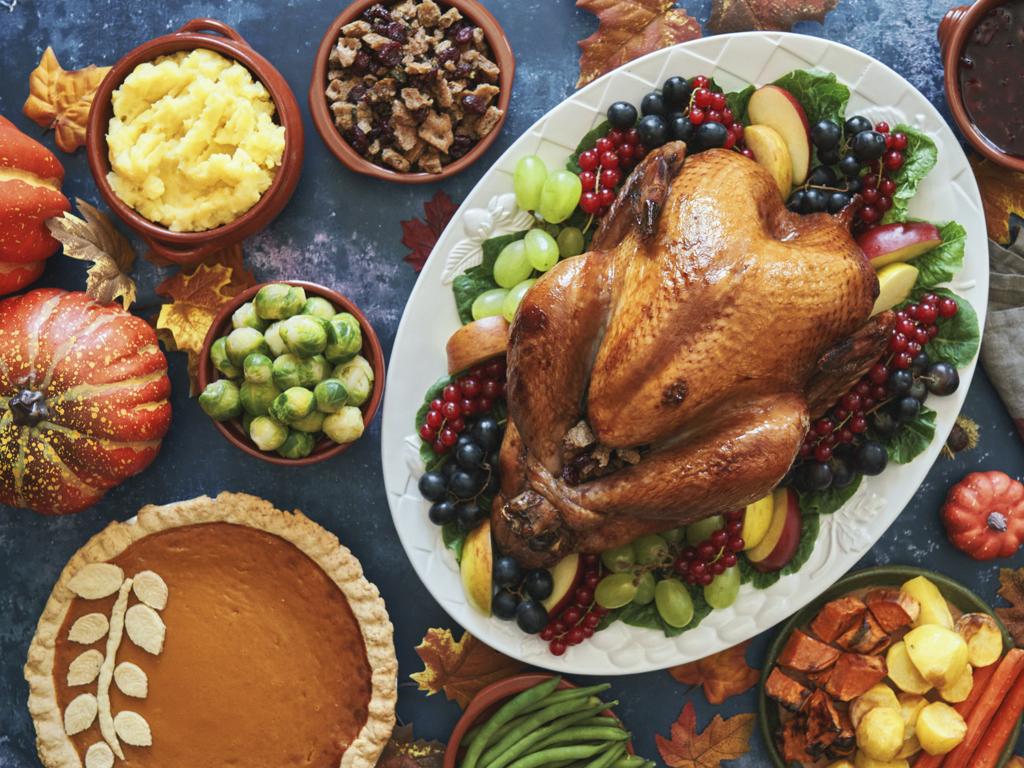Compound Subjects And Objects With Pronouns
Subject: Language arts
Grade: Eighth grade
Topic: Pronoun Types
Please LOG IN to download the presentation. Access is available to registered users only.
View More Content
Compound Subjects and Objects with Pronouns
– Pronouns as subjects and objects
– Pronouns can act as subjects (he, she, they) or objects (him, her, them) in a sentence.
– Compound elements in sentences
– Compound subjects or objects use ‘and’ or ‘or’ to connect pronouns, e.g., ‘She and I went shopping.’
– Role of pronouns in clarity
– Using pronouns helps avoid repetition and makes sentences clearer and more concise.
– Recap of pronoun types
– Review singular, plural, possessive, reflexive, and relative pronouns.
|
This slide introduces the concept of compound subjects and objects using pronouns, which is a continuation of the study on pronoun types. Emphasize the function of pronouns in replacing nouns to avoid redundancy and maintain sentence flow. Discuss how compound subjects and objects are formed by joining pronouns with conjunctions like ‘and’ or ‘or’. Provide examples to illustrate these concepts. Recap the different types of pronouns learned previously to solidify understanding and prepare for more complex sentence structures. Encourage students to create their own sentences using compound subjects and objects with pronouns to reinforce the lesson.
Understanding Pronouns
– Pronouns replace nouns
– Common pronouns: he, she, it, they
– Examples: ‘Sam is tired. He is resting.’ instead of using ‘Sam’ again.
– Pronouns prevent repetition
– Pronouns clarify sentences
– Instead of ‘The students are in class. The students are studying.’, use ‘The students are in class. They are studying.’
|
Begin with a quick review of what pronouns are and their function as substitutes for nouns. This will help students recall prior knowledge and understand the use of pronouns in sentences. Provide examples of common pronouns and show how they can replace nouns to avoid repetition, making sentences clearer and more concise. Emphasize the importance of using pronouns to improve sentence flow and readability. Encourage students to identify pronouns in their reading and practice using them in their writing to become more familiar with their usage.
Compound Subjects with Pronouns
– Definition of compound subjects
– Two or more pronouns used together as the subject of a sentence.
– Connecting pronouns with ‘and’ or ‘or’
– ‘And’ shows both are included, ‘or’ shows a choice.
– Example: ‘She and I’ in a sentence
– ‘She and I will prepare the report.’ shows joint responsibility.
|
This slide introduces the concept of compound subjects in sentences, specifically when using pronouns. A compound subject occurs when two or more pronouns are combined to act as a single subject, typically connected by ‘and’ or ‘or’. ‘And’ is used to indicate that all the subjects are involved, while ‘or’ indicates an option between them. The example ‘She and I will prepare the report’ illustrates how ‘and’ combines the pronouns to show that both people will work together. Encourage students to create their own sentences using compound subjects with pronouns to solidify their understanding. Discuss scenarios where ‘or’ might be used and the difference it makes in the sentence’s meaning.
Compound Objects with Pronouns
– Definition of compound objects
– When two or more pronouns are used as the object in a sentence
– Combining pronouns as objects
– Rules for correctly combining object pronouns
– Example: Teacher speaking to students
– ‘The teacher spoke to him and me after class.’
– Usage in sentences
– Practice creating sentences with compound object pronouns
|
This slide introduces the concept of compound objects with pronouns, which occurs when two or more pronouns are used together as the object of a sentence. It’s important to teach students the correct way to combine pronouns, avoiding common mistakes like ‘me and him’ instead of ‘him and me.’ Use the example provided to show how pronouns function as objects in a sentence. Encourage students to practice by creating their own sentences using different pronouns as compound objects. This will help them understand how to use pronouns effectively in both writing and speaking.
Pronoun Agreement in Compound Structures
– Pronouns must match antecedents
– Ensure pronouns agree in number/gender with the nouns they replace.
– Clarity is key in pronoun use
– Clear pronoun usage avoids confusion in sentences.
– Activity: Spot pronoun agreement errors
– Find and correct mismatched pronouns in sample sentences.
|
This slide introduces the concept of pronoun agreement, emphasizing the need for pronouns to correspond in number and gender with their antecedents. Clarity in pronoun usage is crucial for understanding who or what the pronoun refers to. The class activity involves students identifying and correcting errors in pronoun agreement within given sentences. This exercise will help reinforce the lesson and improve their grammatical precision. For the activity, consider providing sentences with common pronoun agreement mistakes and have students work in pairs or groups to discuss and correct the errors. Possible variations of the activity could include creating a worksheet, using an interactive whiteboard, or having students create their own sentences that demonstrate proper pronoun agreement.
Choosing the Right Pronoun for Compound Structures
– Tips for correct pronoun selection
– Use subject pronouns for subjects, object pronouns for objects
– Avoid common pronoun mistakes
– Don’t confuse subject pronouns (I, we) with object pronouns (me, us)
– Activity: Rewrite sentences
– Replace incorrect pronouns in given sentences with correct ones
|
This slide aims to help students understand how to choose the appropriate pronoun for compound subjects and objects. Emphasize the difference between subject pronouns (I, you, he, she, it, we, they) and object pronouns (me, you, him, her, it, us, them). Highlight common errors, such as using ‘me’ instead of ‘I’ in compound subjects or ‘him and I’ instead of ‘him and me’ in compound objects. The activity involves students rewriting sentences to correct the pronoun usage, which reinforces learning through practice. For the activity, provide sentences with common errors and have students correct them. Examples of activities include peer review of sentences, creating a worksheet with sentences for correction, or using an interactive whiteboard for collective sentence correction.
Class Activity: Crafting Sentences with Compound Pronouns
– Pair up and write 5 sentences
– Use compound subjects and objects
– Combine two pronouns as the doer of the action, e.g., ‘He and I’
– Incorporate various pronouns
– Use pronouns like ‘us’ or ‘them’ as objects, e.g., ‘The gift was for her and me’
– Share your creations with the class
|
This activity is designed to reinforce the students’ understanding of compound subjects and objects using pronouns. Have the students pair up to promote collaboration. They should write five sentences that include compound subjects (e.g., ‘She and I’) and objects (e.g., ‘him and her’) with pronouns. Encourage creativity and the use of different pronoun combinations. After writing, each pair will share their sentences with the class, providing an opportunity for peer learning. As a teacher, be prepared to offer feedback and clarify any misconceptions. Possible variations of the activity could include creating compound subjects and objects with a mix of nouns and pronouns, or writing sentences based on pictures or prompts provided by the teacher.
Review and Reflection: Compound Pronouns
– Recap compound pronouns
– Review how pronouns can be combined to form compound subjects or objects, like ‘he and I’ or ‘you and them’.
– Discuss class learnings
– Reflect on the usage of compound pronouns in sentences and their importance in language.
– Address any questions
– Homework: A short story
– Incorporate at least 10 different compound pronouns into a creative story.
|
This slide aims to consolidate the students’ understanding of compound subjects and objects with pronouns. Begin with a brief review of the lesson, ensuring that students can confidently identify and use compound pronouns. Open the floor for discussion, allowing students to share what they’ve learned and ask any lingering questions. For homework, students will write a short story that includes at least 10 different compound pronouns, which will help reinforce their understanding through practical application. Provide examples of compound pronouns and encourage creativity in their stories. This exercise will also enhance their writing skills and ability to use pronouns effectively in context.






